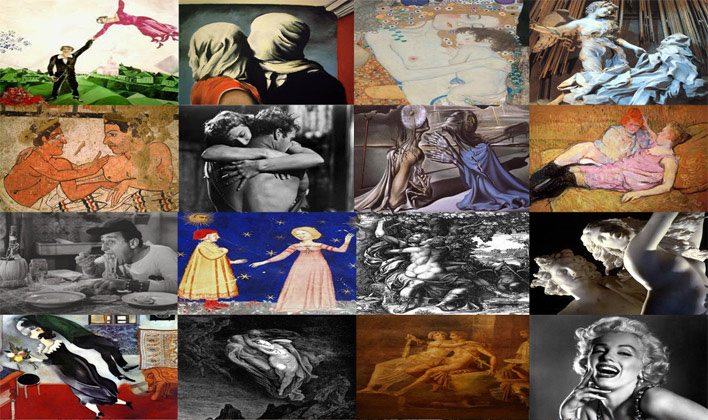Small Generators of Desire. On the Meronimic Function of Objects in Ivan A. Pyr’ev’s Cinema
Abstract
In a recent article, Olaf Möller has stressed the enigmatic character of Pyr’ev’s production, referring in particular to his “political wisdom” and to his profound understanding of the Soviet mind-set. “For Pyr’ev,” writes Möller, “cinema meant intelligent entertainment for the masses – a people’s art. He made films to be thoroughly understood, and he knew that stories and images everybody knew were a short-cut to the collective unconscious, the dream life of a nation, its desires and fears, angels and demons. He knew what people longed for” (2012: 215).
On the basis of these premises, the essay analyses how desire is built within Pyr’ev’s language. Particular attention is devoted to the relationship between gaze, film and stimulation of desire. Drawing from the theoretical frameworks provided by the Soviet cultural studies and the so-called “gaze theories”, this study examines several films belonging to the genre of the Kolchoz musical comedy, such as Svinarka i Pastuch (1941) and Kubanskie Kazaki (1950).
Downloads
References
Anderson, Trudy, “Why Stalinist Musicals?”, Discourse, 17.3, 1995: 38-48.
Argyle, Michael, Janet, Dean, “Eye Contact, Distance and Affiliation”, Social Encounters: Readings in Social Interaction, Harmondsworth, Penguin, 1973: 173-87.
Augé, Marc, Il dio oggetto, Roma, Meltemi, 2002.
Barry, Ann Marie Seward, Visual Intelligence: Perception, Image and Manipulation in Visual Communication, New York, State University of New York Press, 1997.
Berger, John, Ways of Seeing, London, Penguin, 1972.
Bodei, Remo, La vita delle cose, Bari, Laterza, 2009.
Cingolani, Gabriele, Riccini, Marco (eds.), Sogno e racconto. Archetipi e funzioni. Atti del Convegno di Macerata, 7-9 maggio 2002, Firenze, Le Monnier, 2003.
Denzin, Norman K., The Cinematic Society: The Voyeur’s Gaze, London, Sage, 1995.
Elkins, John, The Object Stares Back: On the Nature of Seeing, New York, Simon & Schuster, 1997.
Fateev, Andrej V., Obraz vraga v sovetskoj propagande. 1945-1954 gg., Moskva, Ran, 1999.
Fusillo, Massimo, Feticci. Letteratura, cinema, arti visive, Bologna, Il Mulino, 2012.
Gasbarro, Nicola, “Il dio-oggetto: una riflessione storico-religiosa”, Il dio oggetto, Augé 2002: 139-87.
Hall, Stuart (ed.), Representation: Cultural Representations and Signifying Practices, London, Sage, 1997.
Jenks, Chris (ed.), Visual Culture, London, Routledge, 1995.
Kapterev, Sergej, Post-Stalinist Cinema and the Russian Intelligentsia, 1953-1960: Strategies of Self-representation, De-Stalinization, and the National Cultural Tradition, Saarbrücken, VDM Verlag, 2008.
Krips, Henry, “The Politics of the Gaze: Foucault, Lacan and Žižek”, Culture Unbound, 2, 2010: 91–102, disponibile anche online: http://www.cultureunbound.ep.liu.se (ultimo accesso 01/03/2012).
Kuryleva, Ljubov’ A., Nikiforova, Alla S., “Culturally-Marked Vocabulary in Translation of Russian Political Media Discourse”, Intercultural Communication Studies, 21.1, 2012: 255-65.
Lunačarskij, Anatolij V., Sobranie sočinenii: literaturovedenie, kritika, estetika, T. 8, Moskva, Chudožestvennaja literatura, 1967.
Mayne, Judith, Cinema and Spectatorship, London, Routledge, 1993.
Messaris, Paul, Visual Persuasion: The Role of Images in Advertising, London, Sage, 1997.
Möller, Olaf, “Ivan Pyr’ev, l’enigma della Mosfil’m”, Il Cinema Ritrovato, XXVI° edizione. Bologna, dal 23 al 30 giugno 2012, Bologna, Fondazione Cineteca di Bologna, 2012: 215-23.
Mulvey, Laura, “Visual Pleasure and Narrative Cinema”, Screen, 16.3, 1975: 6-18.
Id., Visual and Other Pleasures, London, Macmillan, 1989.
Ol’chovyj, Boris S. (ed.), Puti kino: pervoe vsesojuznoe partijnoe soveščanie po kinematografii, Moskva, TeaKinoPečat’, 1929: 429-44.
Orlando, Francesco, Gli oggetti desueti nelle immagini della letteratura, Torino, Einaudi, 1997.
Pianigiani, Ottorino, Vocabolario etimologico della lingua italiana, Genova, Polaris, 1993.
Piemonti, Anita, Polacco, Marina (eds.), Sogni di carta: dieci studi sul sogno raccontato in letteratura, Firenze, Le Monnier, 2001.
Piretto, Gian Piero, “Territorija Kubani i stalinskaja utopija ‘izobilija’”, Slavica Tergestina, 8, 2000: 241-62.
Id., Il radioso avvenire. Mitologie culturali sovietiche, Torino, Einaudi, 2001.
Id., La vita privata degli oggetti sovietici, Milano, Sironi, 2012.
Pisarevskij, Dmitrij S., Iskusstvo millionov: sovetskoe kino 1917-1957, Moskva, Iskusstvo, 1958.
Ščerbenok, Andrej, “The Enemy, the Communist, and Ideological Closure in Soviet Cinema on the Eve of the Great Terror (The Peasants and The Party Card)”, Kritika: Explorations in Russian and Eurasian History, 10.4, 2009: 753-77.
Stites, Richard, Russian Popular Culture: Entertainment and Society since 1900, Cambridge, Cambridge University Press, 1992.
Šumjackij, Boris Z., Kinematografija millionov, Moskva, Kinofotoizdat, 1935.
Taylor, Richard, “Singing on the Steppes for Stalin: Ivan Pyr’ev and the Kolkhoz Musical in Soviet Cinema”, Slavic Review, 58.1, 1999: 143-59.
Turovskaja, Majja, “I.A. Pyr’ev i ego muzykal’nye komedii: k probleme žanra”, Kinovedčevskie zapiski, 1, 1988: 111-46.
Williamson, Judith, Decoding Advertisements: Ideology and Meaning in Advertising, London, Marion Boyars, 1978.
Youngblood, Denise J., Movies for the Masses: Popular Cinema and Soviet Society in the 1920s, Cambridge, Cambridge University Press, 1992a.
Id., “Entertainment or Enlightenment? Popular Cinema in Soviet Society, 1921-1931”, New Directions in Soviet History, Ed. Stephen White, Cambridge, Cambridge University Press, 1992b: 41-61.
Copyright Notice
You are free to copy, distribute and transmit the work, and to adapt the work. You must attribute the work in the manner specified by the author or licensor (but not in any way that suggests that they endorse you or your use of the work).









